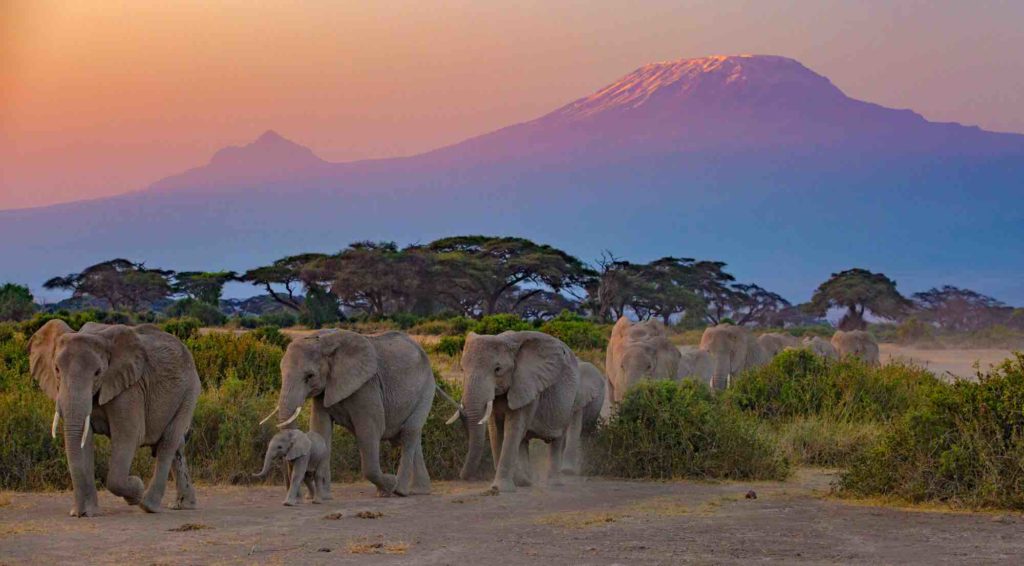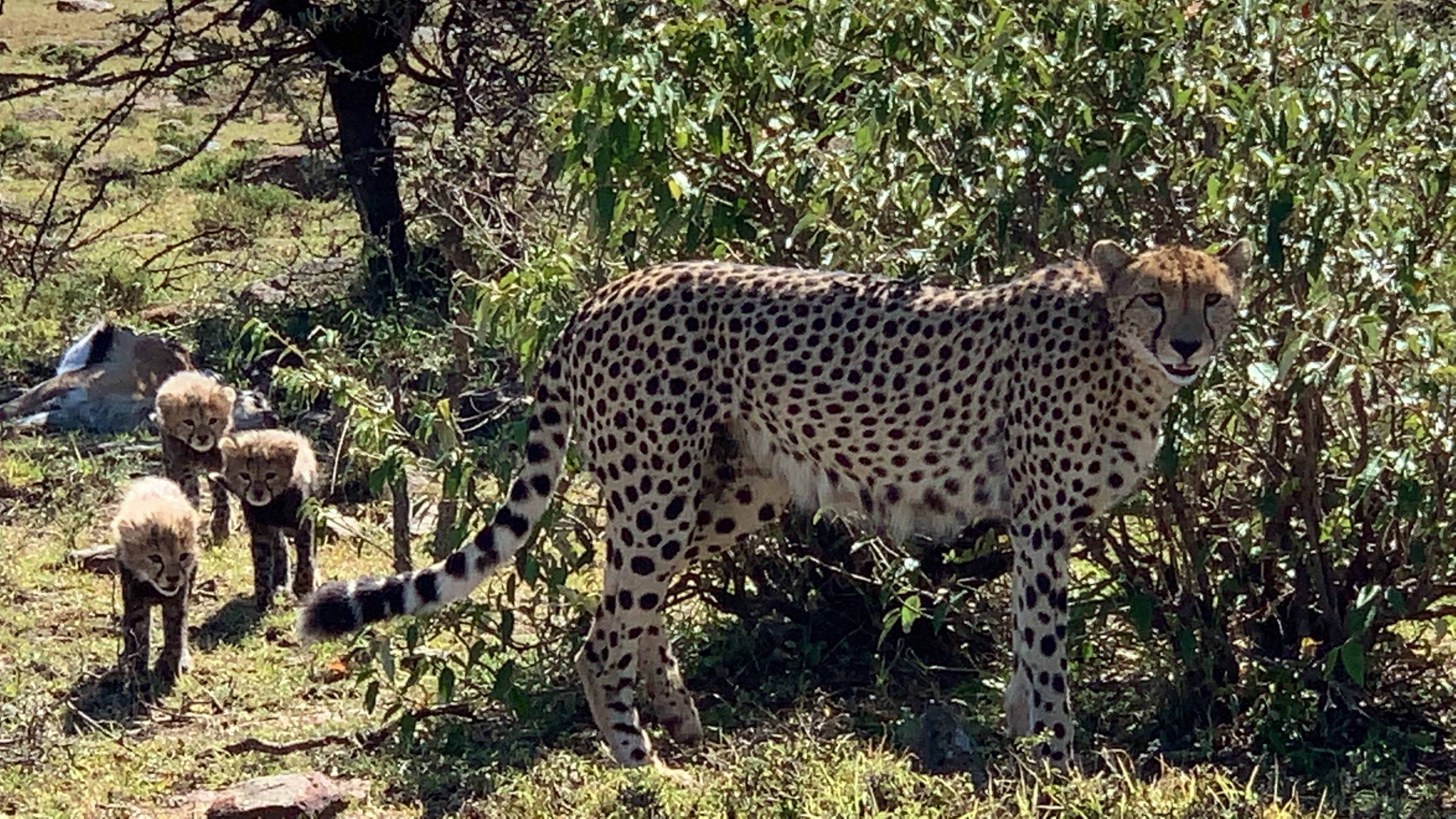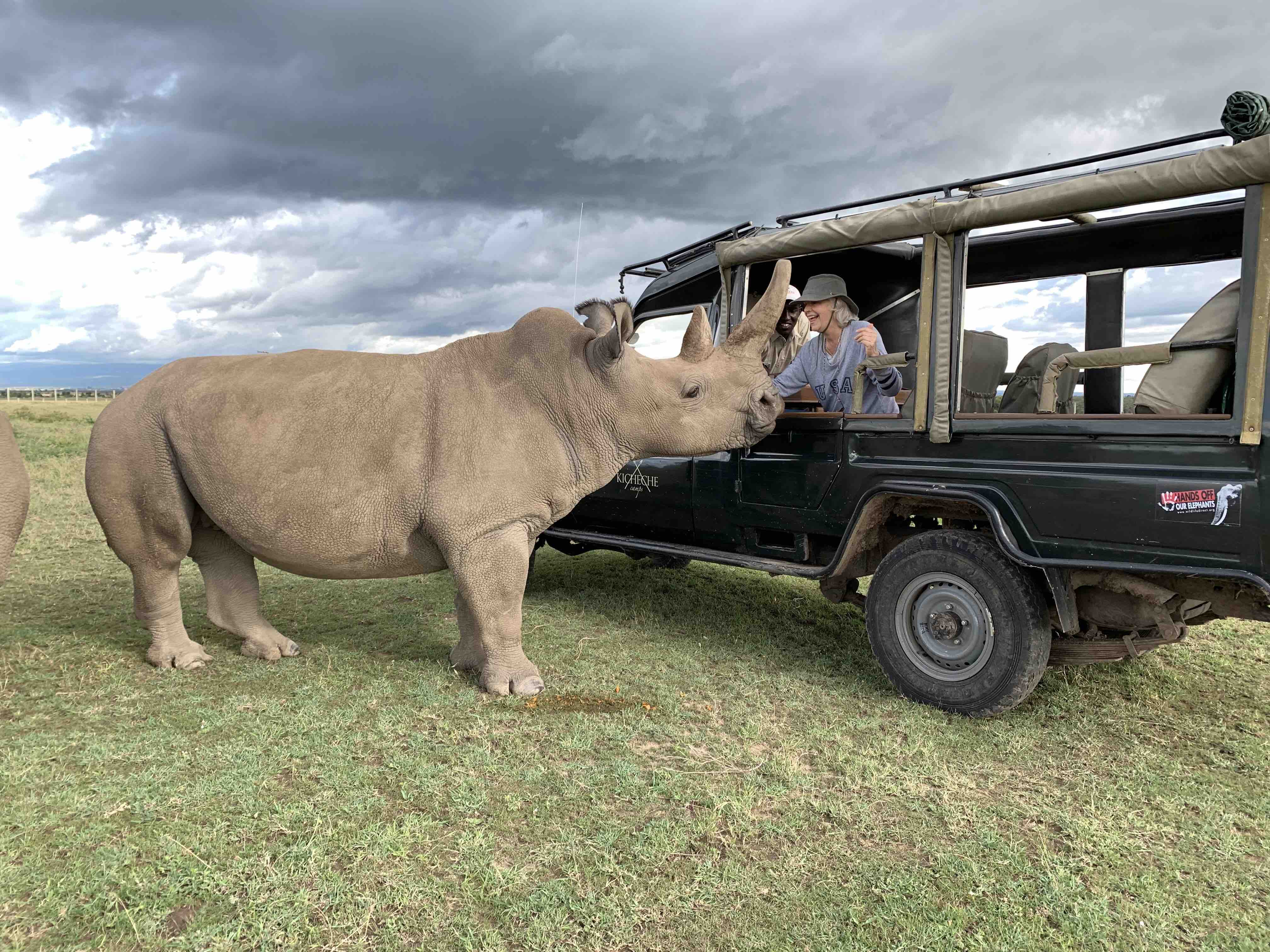One of the most popular safari destinations, Kenya is the country I recommend the most for first time travelers on safari.
known for its abundant wildlife and the Great Migration. The country brimming with romance, thrill and adventure – nothing says “classic safari” quite like a Kenyan safari.
Check out the videos of my safari travels to see for yourself.
- The Masai Mara in Kenya, and the Serengeti in Tanzania, form The Greater Serengeti Ecosystem. One of the largest protected ecosystems on Earth, its 40,000 square kilometers (25,000 square miles) is home to the big five (elephant, lion, leopard, buffalo, and rhino).
Every year a million wildebeest, half a million gazelle and 200,000 zebra follow the rains and fresh grass in a continual semi-predictable circle within these two areas. So if you time it right, and go to the right camps, you will witness the largest migration on earth.
Although the Mara is the most popular reserve in Kenya, there are other gems as well. Tsavo and Amboseli have huge numbers of elephants including the big tuskers. The Samburu region is home to endemic endangered animals such as grevy’s zebra, reticulated giraffe, and hirola.

- PREDATORS
Where there is prey, there are predators. The Mara was the location for the Big Cat Diaries, and Discovery Channel and Animal Planet film many of their African wildlife segments here. Why? Because the Masai Mara offers quintessential Africa scenery and experiences. The wide-open plains make it easy to find lots of wildlife.

- CULTURAL INTERACTIONS
The Maasai Mara is owned by the Maasai people and managed in partnership with the Kenyan Government and the lodge companies. The camps and lodges have lease agreements with the Maasai people so that everyone benefits. This is a model duplicated across Kenya. Your visit benefits the local people. Depending on where you are in Kenya, The Maasai and Samburu people work at the lodges, and your stay can include a visit to a traditional Maasai or Samburu village.

- FRIENDLINESS
My safari clients consistently comment on how friendly the local people are. From the passport control, hotel staff, safari operators and people working at the camps where you stay, everyone is smiling and welcoming. One of my clients, comparing the friendliness here to the famous “aloha” attitude of the Hawaiian people, said “Kenya wins”.
“Kirubu” which means welcome in the local KiSwahili language, is one of the most commonly used words in Kenya. Not only are the people friendly but the country loves tourists and foreigners. “They help our economy,” is how my taxi driver describes it.
A bonus here is that almost everyone speaks English.
- LEADING EDGE CONSERVATION
Kenya is the only safari country that has had a consistent no-hunting policy (in place since 1977). A couple of years ago the government added a ‘shoot to kill policy’ to combat poaching.
Kenya is also home to some of the top conservation NGO’s in the world. Lewa Wildlife Conservancy helped build the first elephant corridor, an underground tunnel that allows elephants to cross under the busy Meru/ Nanyuki highway. Ol Pejeta Conservancy is a sanctuary for the last two Northern White Rhinos left in the world. And the gold standard for successfully raising orphaned baby elephants (the Sheldrick orphanage) originated in Kenya.

- IDEAL WEATHER
British expats talk about the sunshine as one reason they love it here. But this is not the hot African sun of your imagination. Most of where you go on safari in Kenya is at an altitude of 3,000-5,000 feet. This keeps the temperatures cooler than many other places on the continent. Kenya’s hottest months are January and February, but most of the year expect temperate day time temperatures and cool nights. (I compare it to Southern California).
- EASE OF GETTING AROUND
Tourism is the number one contributor to the economy here. That means the country is very accommodating to its foreign visitors. Wilson is a small Nairobi airport dedicated to transporting khaki-clad safari bound tourists to and from the bush. And there is a train that goes from Nairobi to the coast.
English is spoken in the cities and at all the safari camps and lodges.
- WIDE VARIETY OF OPTIONS FOR AN AMAZING SAFARI EXPERIENCE
Safari packages range from rustic to luxurious. That means no matter what your budget you can experience at least a basic safari experience. Nairobi is the only city in the world that has a National Park (lions, giraffe, zebra … ) within its boundaries. So you don’t need to go far to see a few of the ‘big five’ animals.
- NAIROBI’S WORLD FAMOUS ATTRACTIONS
Daphne Sheldrick Elephant Orphanage
Karen Blixen Museum
The Maasai Market and other craft stores
- A KENYAN SAFARI NEVER DISAPPOINTS (but see my caveat below)
For all of the nine reasons mentioned above, Kenya gives safari travelers a life-changing journey full of wildlife encounters and cultural experiences in a friendly comfortable setting.
Caveat: Despite all of this, you still need to know when to travel to Kenya and where the best parks and camps are in order to get all that Kenya has to offer.
Contact me to get started on creating an amazing safari to Kenya.
